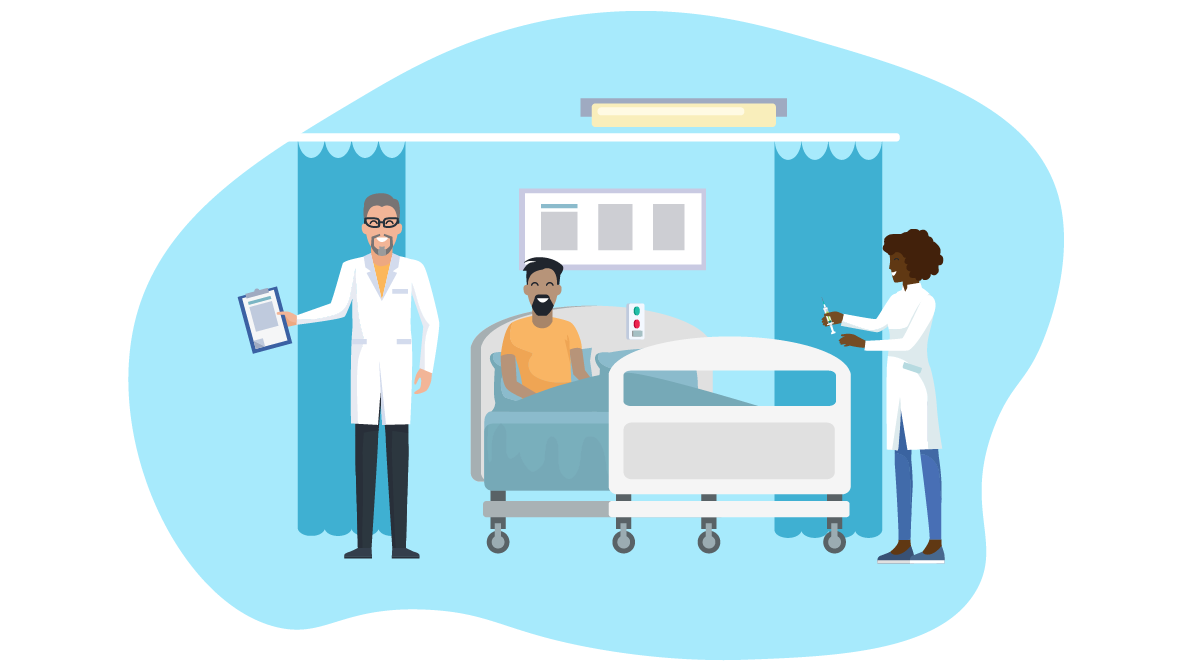
By: Khiet Ngo, D.O., M.S. | Assistant Dean, Curricular Innovation | Loma Linda University School of Medicine
At Loma Linda University School of Medicine (LLUSM), a key framework of our curricular design is the integration of basic science, clinical sciences, and health system science. Our Discovery Curriculum is an organ-system-based curriculum that combines didactic lectures, case-based learning, team-based learning, and problem-based learning.
The process of cognitive integration, which occurs in the mind of the learner, has been difficult for students to understand and practice. It can be even more difficult for faculty to see and assess how students construct and integrate their knowledge and understanding. In our new curriculum, we wanted students to not only consume knowledge as they have always done, but also to build skills of deconstructing, analyzing, and reconstructing their own conceptual understanding. Because repetition and reinforcement are vital to learning and creating habits, we wanted to take a long-term view in building this part of the curriculum. The challenge, of course, was how do we do this strategically?
Integrated Illness Scripts as a Foundational Tool
Until recently, few tools existed that facilitated learner-level cognitive integration. At about the same time we were grappling with this challenge, we learned about Aquifer’s innovative Integrated Illness Scripts (IIS) and Mechanism of Disease (MOD) maps through our work as a pilot school for the project. It was clear that these were truly boundary-crossing tools that can be used for teaching, learning, and most importantly, clinical practice for any level of learner, faculty, or health care provider. In the context of medical education, a boundary-crossing tool is one that can be used in multiple diverse learning environments across the span of time in a curriculum. Thus, our current strategy is to have students use these tools to build and apply their own cognitive integration framework throughout the four years of medical school.
1st Year – Creating IIS & MOD Maps
In the pre-clerkship years, teams of students collaborate to create integrated illness scripts and MOD maps based on patient cases presented during problem-based learning (PBL). During the first block of their freshman year, students learn how to build IIS and MOD maps by working through an IIS worksheet that walks them through each part of the research, and writing process (eg. “Write a step by step mechanism of pain associated with compartment syndrome; include the genetic, molecular, biochemical, cellular, tissue, and/or organ-level details as needed to clearly explain the mechanism.”). Students’ understanding and application of concepts from the IIS/MOD maps are assessed using synthesis essay questions throughout the pre-clerkship years at the end of each organ-system block
Although the work can be challenging for early students, we have found success by providing clear guidelines on the level of detail required and suggested resources as a starting point. Students are also given regular, detailed feedback on their work and encouragement from faculty who explain why their efforts are important for their current development and future growth.
2nd Year – Pre-Clerkship Application: Problem-based Learning
Students apply the IIS/MOD maps they develop in the first and second year to make, explain, and/or justify differential diagnosis and management decisions in a 3-week Integration Block at the culmination of the second pre-clerkship year, just prior to taking their USMLE Step 1 exam.
Faculty are using different approaches to design the learning activities, which can be easily adapted to be done individually or in teams, in the classroom (in-person or virtual) or as an asynchronous activity. One of the most commonly used frameworks is to combine clinical skills (history and PE performance) with clinical reasoning. For example, students—or teams of students—can be given an undifferentiated patient case and asked to:
- develop the most likely differential diagnosis;
- create a plan for testing and treatment;
- predict the clinical patient outcomes with and without treatment.
Students then use IIS/MOD maps that they have created (or have available as a reference) to compare and contrast diagnoses to make a decision for #1; justify or explain their rationale for #2, and explain #3. “What if” type questions can also be added to the exercise that would require students to explain variations using the IIS/MOD maps.
3rd Year – Clerkship Application & OSCE’s
Students apply and refine IIS/MOD maps created during pre-clerkship education to make, explain, and/or justify differential diagnosis and management decisions during clerkship training in their junior year. There are a variety of application activities that can be customized depending on the clerkship and the experience of individual faculty:
- Case-based sessions (similar to those conducted in the second year)
- Include in assessments—written, OSCE’s, or simulations. For example, as part of an OSCE SOAP note, there can be a section that asks students: “Justify your choice of decision “x” using an integrated basic and clinical science explanation.”
- Explain or justify clinical decisions on the wards based on their understanding of basic and clinical sciences.
- Assign students or teams a different feature from a disease to research and synthesize the mechanisms.
- Incorporate into morning reports and other case discussions.
Students’ understanding and application of concepts embedded in the IIS/MOD maps can be assessed using synthesis essay questions linked to authentic case-based learning, objective structured clinical exams, and simulation labs.
4th Year – Refining IIS/MOD Maps in Senior Selectives
Senior students review and refine the IIS/MOD maps that they previously developed during this senior year selective course that integrates clinical and basic science. Students also develop new IIS/MOD maps that are directed towards their future specialty training, creating their own resource library as their training advances.
Gaining Visibility & Guiding Minds
It has been rewarding to see students begin to integrate concepts on their own and produce increasingly accurate and high-quality IIS and MOD maps as their skills develop. Faculty have observed students begin to transfer what they learn in designing their IIS/MOD map into different parts of the curriculum, referencing their own work to make connections in future courses; for example, noticing the same mechanisms and concepts learned in a foundational course to explain the complications of diabetes in the endocrine block months later.
Implementing the IIS and MOD map framework throughout our curriculum ensures that students repetitively practice building and applying their cognitive integration framework. We have found that authentic synthesis essay questions on exams are essential in assessing cognitive integration (as a complement to traditional multiple-choice question exams). Providing students with the opportunity to develop their skills of building and applying IIS and MOD maps makes a once hidden process (cognitive integration) explicit and visual—and allows faculty to help assess progress, offering feedback and coaching.
“The Act is the Outcome”
As medical educators, we obsess over assessments and outcomes for our students. Is what we are doing working? Are the changes we have implemented making a difference? Is the investment worth the cost? While we will continue to obsess over outcomes of IIS and MOD maps as we should, I recently came across this quote: “The act is the goal.” Reflecting on this simple phrase as I grade and offer our students feedback on their IIS, MOD maps, and synthesis essay questions, I cannot help but think that maybe the grade I am giving is more of a secondary outcome. Perhaps the outcome I care most about lies in each student’s struggle and gradual growth through the acts of iteratively creating and revising their IIS and MOD maps, or constructing their response to synthesis essay questions. Regardless of the grade I give, perhaps the primary outcome is actually in the acts of analyzing, creating, and revising, making “The act as the outcome” that I’m looking for.




